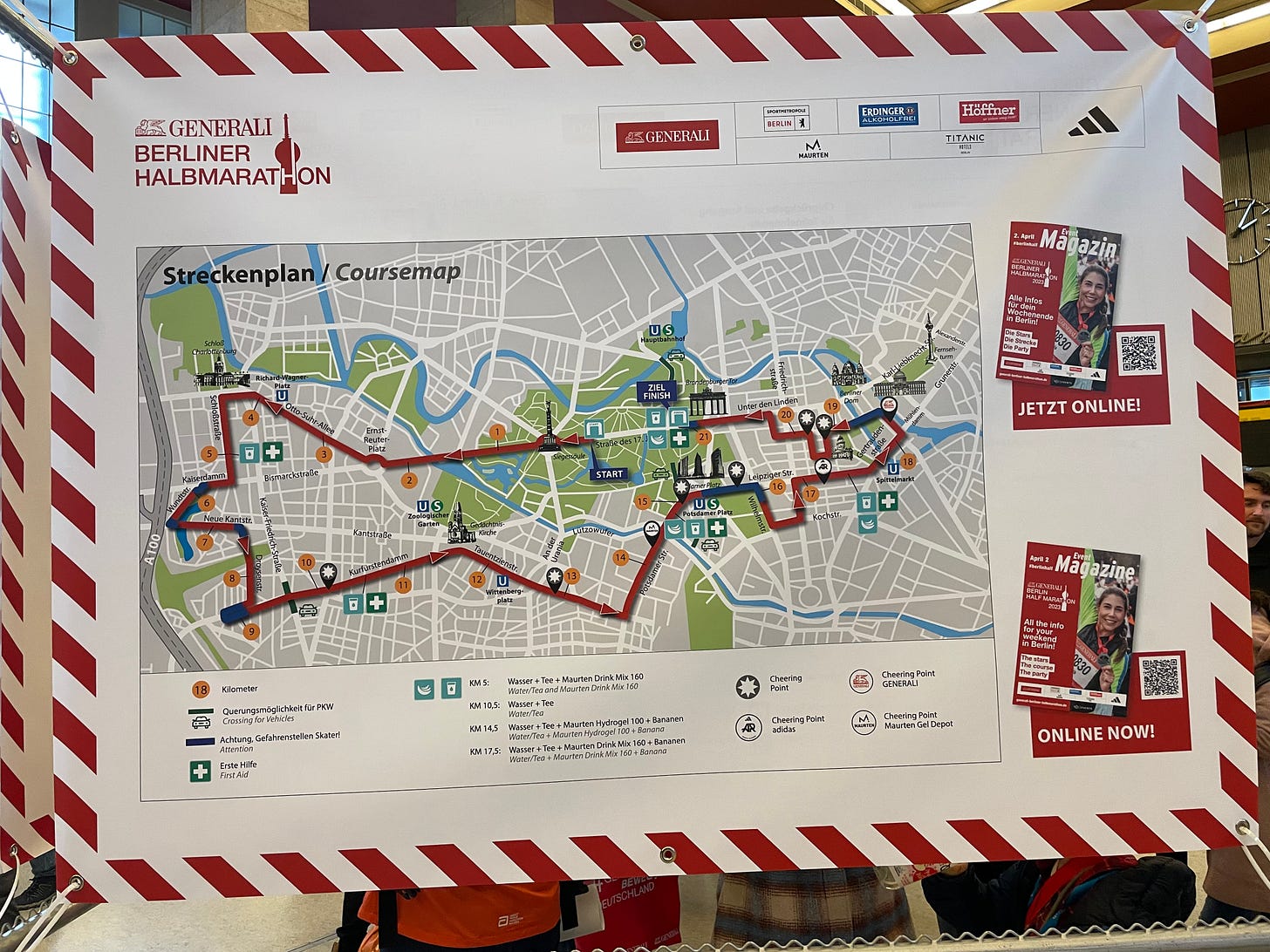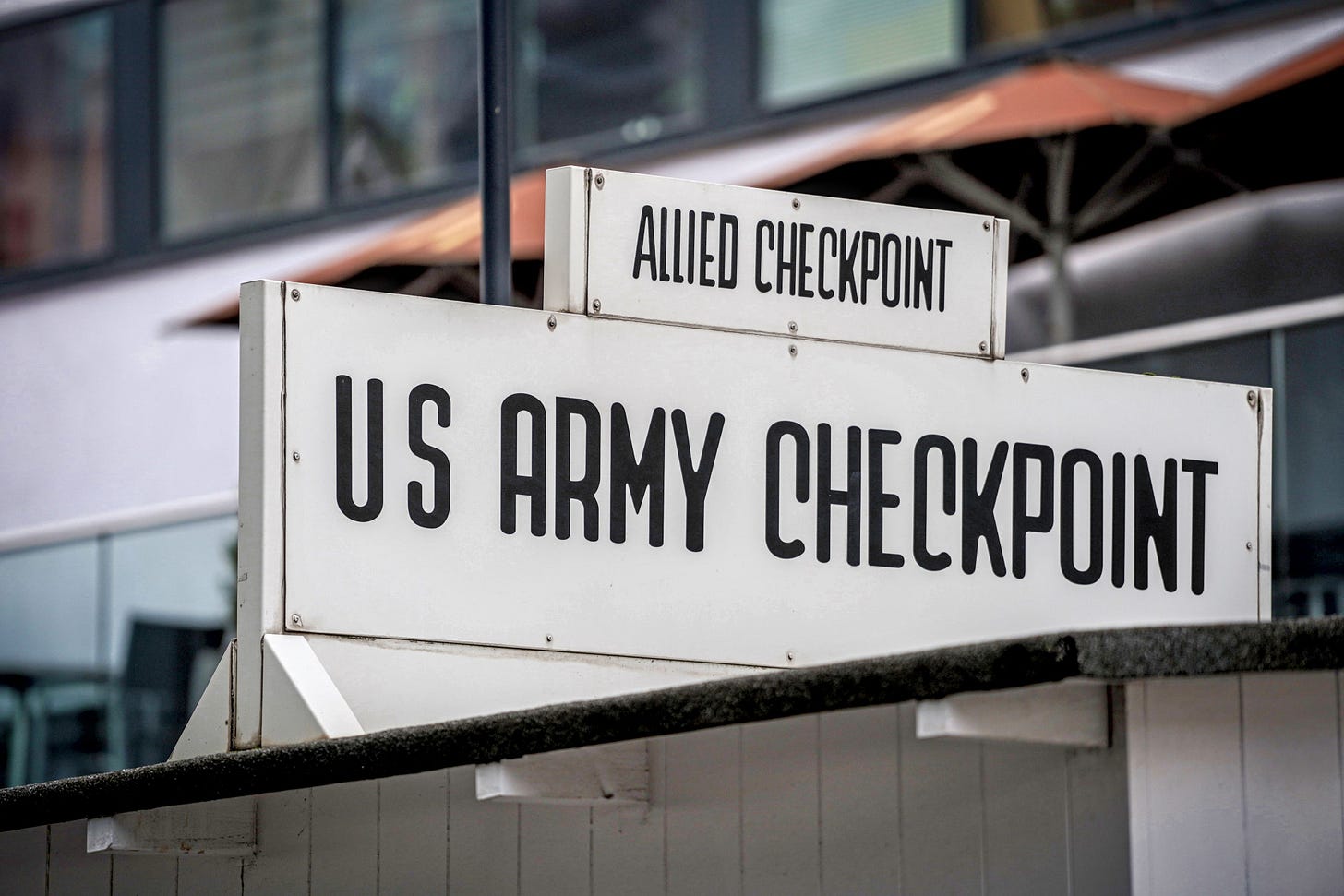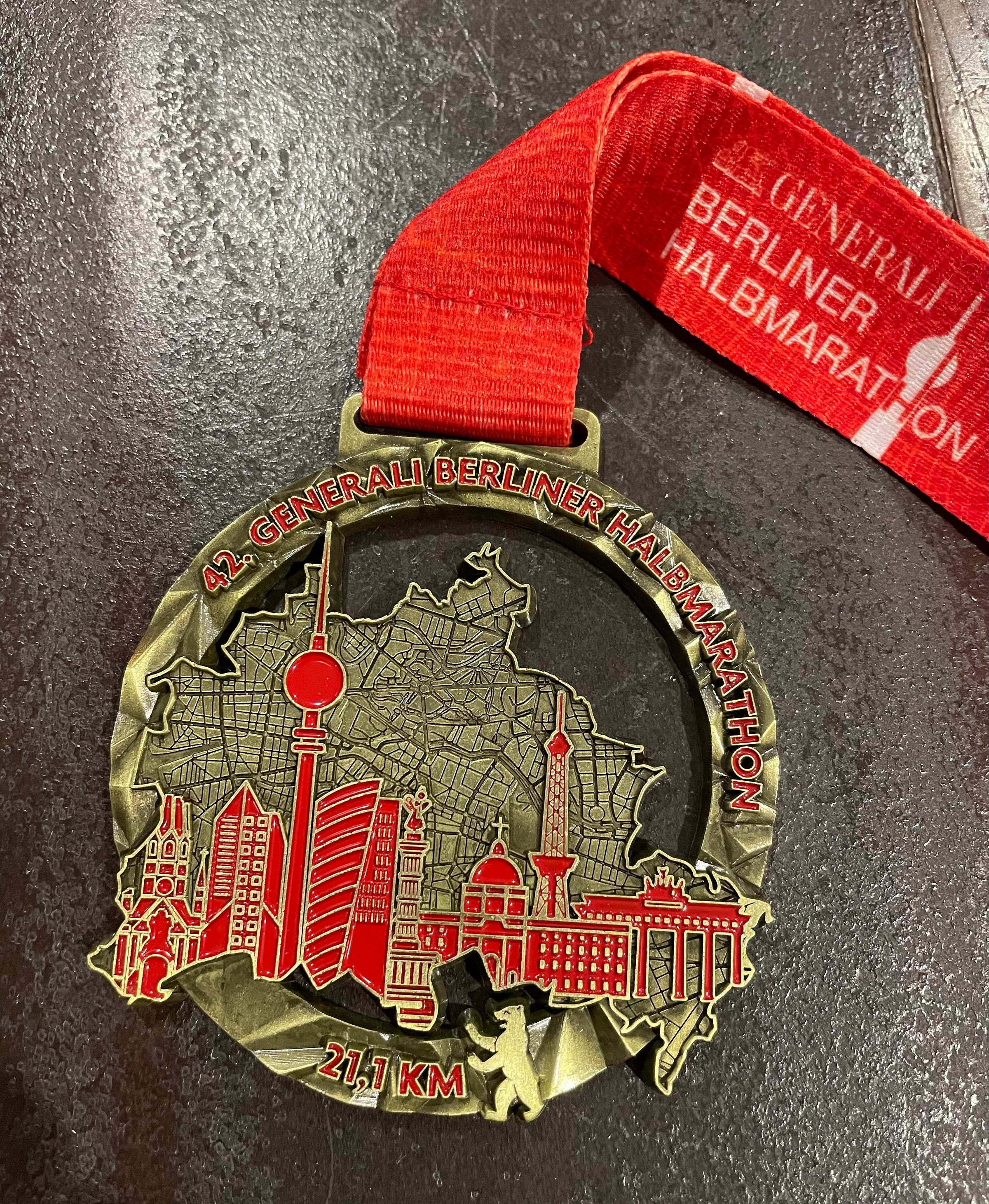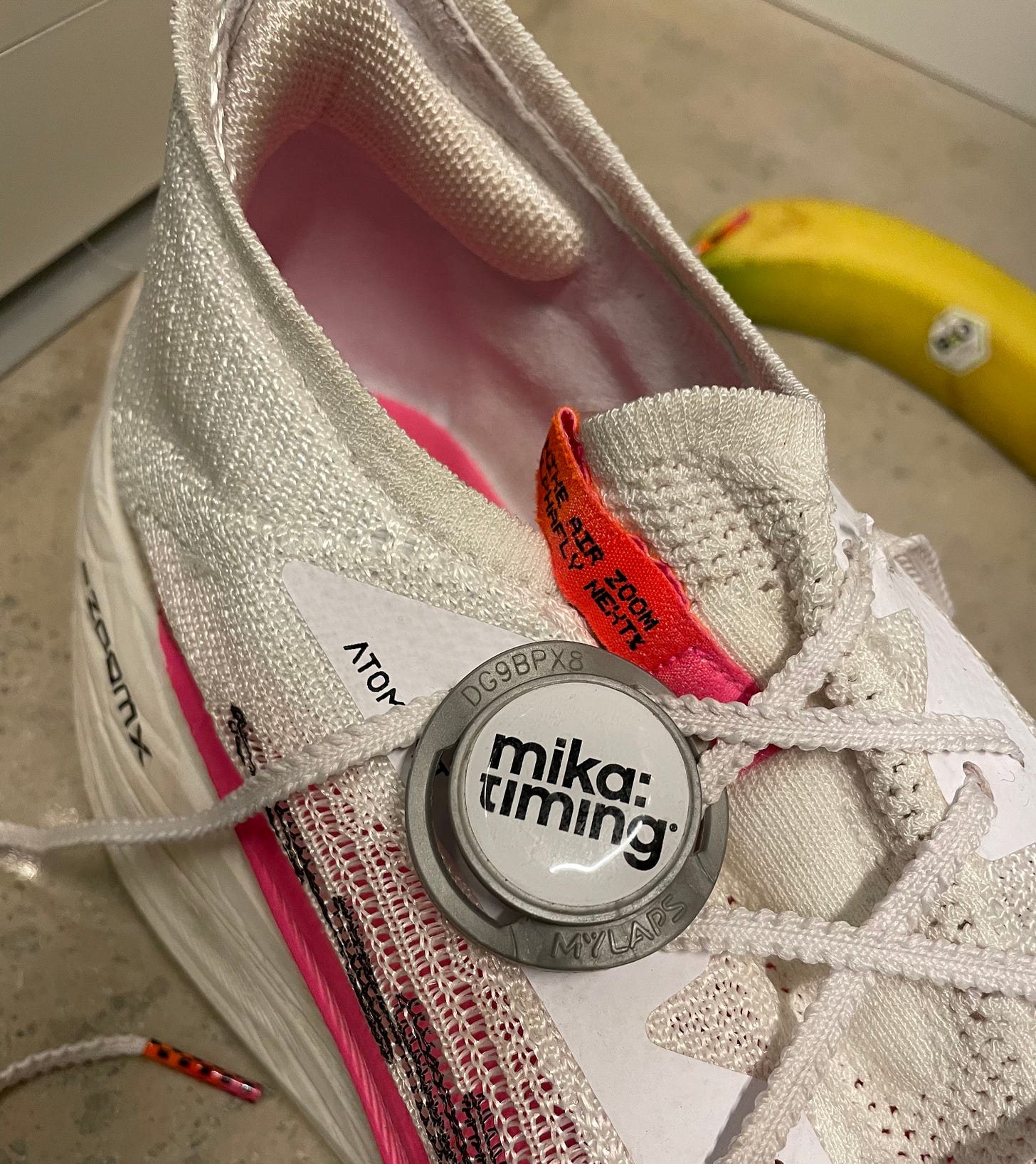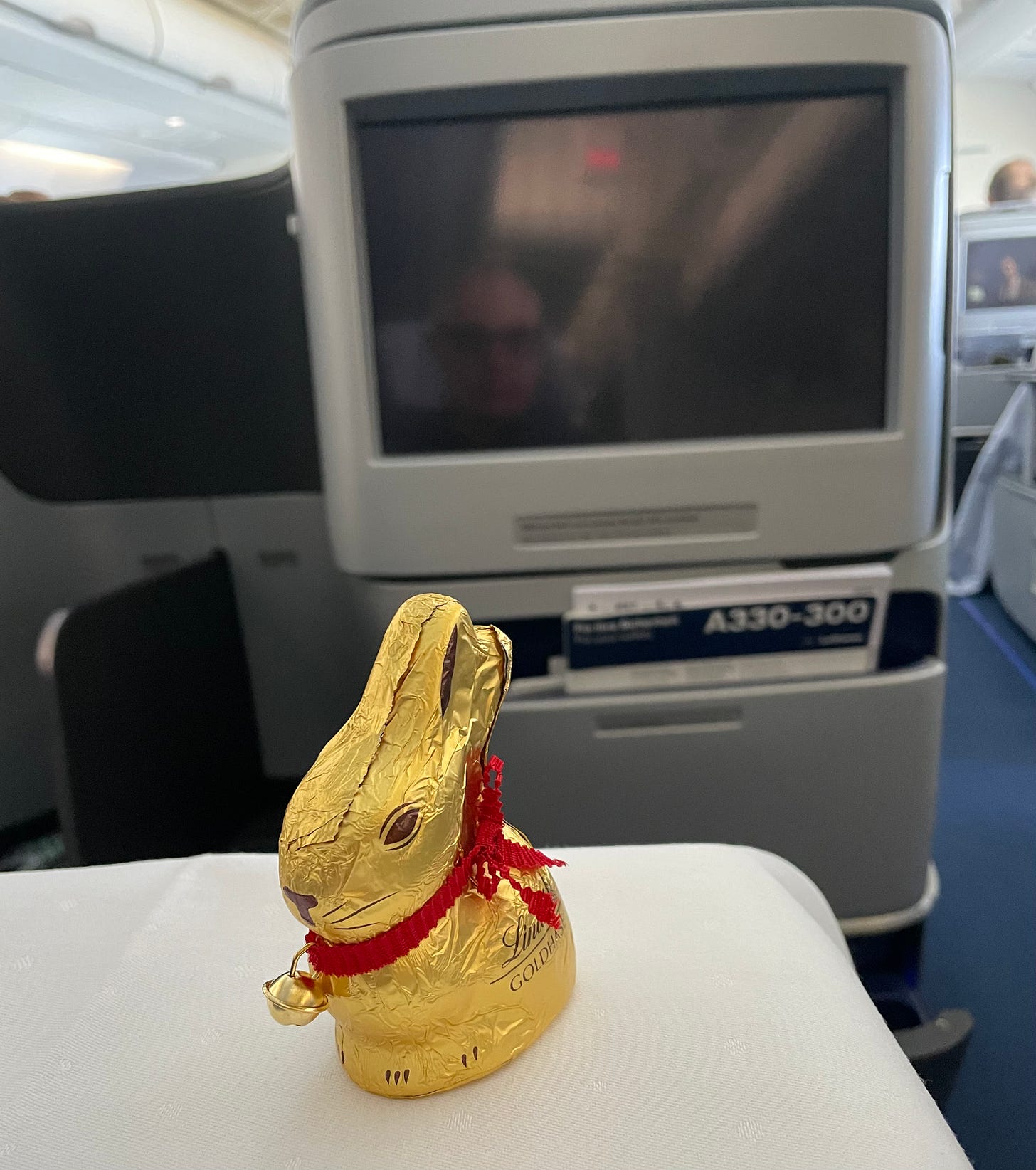Berlin Half Marathon 2023 review
Brilliant race with a flat, iconic course. Plus: How this race connects with Pan Am, and thoughts on negative splits.

The Berlin Half Marathon — which generally takes place in early April — is the largest half in Germany. The results indicate that on April 2, 2023, over 26,000 runners, including myself, completed the sold-out race — an impressive number, although less than the 35,000 referenced in some of the public relations materials. There were over 5,000 more males than females. That would be unusual in the US where races tend to have more of a gender balance or, if anything, rather more women in the field.
The Berlin Half has the same sponsor as the Munich Half — Generali, a global insurance and asset management firm — and the branding looks very similar, so you might imagine they are sibling events. But they are run by different organizations and differ in a number of ways. One is that the Berlin Half is the only distance run on that day, whereas Munich combines a half and full on the same day.
All other things being equal, I prefer half marathons that are their own thing as opposed to being run alongside a full. Even though the half distance tends to attract more runners when this occurs, it slightly diminishes the occasion from a 13.1-mile perspective.
Berlin Half Marathon course
The organizers of the Berlin Half Marathon do not publish an elevation chart. And the reason may be there is little elevation information to report. This is a very flat course. Although there are a few slight inclines, with corresponding minor declines, there is nothing that could fairly be called a “hill.”
The course begins and ends in a large park in the city center, the Tiergarten, which is framed at one end by the Brandenburg Gate — perhaps Berlin’s most famous landmark — through which runners pass right at the end, making for a memorable finish. The race begins a little further into the park, but the start and finish lines are quite close to one another.
It’s a loop course, and there is only one pretty short out-and-back segment. So for almost all the race, you are running into new territory and not passing runners in the opposite direction. That’s one reason why it’s the opposite of a dull course. Another is that it goes through prime, iconic Berlin real estate, including a stretch along the Kurfürstendamm — one of the most famous avenues in Berlin, which some think of as the city’s version of Paris’ Champs-Élysées — and Unter Den Linden, another of its most famous boulevards. Students of the Cold War will appreciate running past Checkpoint Charlie, the famous American crossing point between East and West Berlin.
Another thing that keeps the race interesting is an unusually high level of crowd support. In almost 70 half marathons, I’m not sure I can recall another with this level of engaged crowds throughout the course. At times, there was the sort of crowd energy you’d normally only expect at a finish line. There were also a good number of bands and drummers to help buoy runners’ spirits.
There were only four water stations — less, perhaps, than you might expect. I didn’t use any of them as I was carrying my own, but if you are relying on race-supplied water, you should plan accordingly. Water is given out in plastic cups, a surprising choice for an event that touts its green credentials in some of its marketing. The course map indicates tea is also available at the water stations, not something I’ve come across before.
The start and finish areas
When you enter the start area, you find yourself in front of the Reichstag, the German federal parliament, which provides a grand backdrop. It takes a while to get from there to the starting corrals.
Unlike in many European races, announcements in the start area were intermittently in English. Not that you’d be lost without them, as the overall flow upon arriving and departing is fairly intuitive. If approaching from the southern side of the park, you need to walk a long loop around closed-off areas before being able to enter the starting zone and then, once inside, looping back to the corrals. Keep that in mind when planning when to set out.
The race started in five waves, the first launching off at 10:05 AM and the last an hour later. I was in the third one, which started punctually at 10:35 AM. Wave assignments are shown on runner bibs based on estimated finish times, but entry into the correct corrals is not enforced — at least, it wasn’t for the wave to which I was assigned. During the race, I found myself — as a middle-of-the-pack runner — passing others quite a lot more than being overtaken, so I suspect quite a few participants started in waves ahead of their assigned one or were overly ambitious in entering predicted times.
The lines for porta potties seemed very long and slow. But in the European tradition, quite a few male runners entered the woods to use a discreet tree.
There had been quite heavy and persistent rain in the days leading up to race day. It was also cold. I don’t necessarily mind running in rain, but a combination of rain and low temperatures can make for a miserable experience, not so much while running — when the exercise warms you up — as at the start and end of a race. The nearest I have ever come to hypothermia was once on a cold, wet morning right after running the Boston Half.
Fortunately, the rain finally stopped the night before the race. But forecast temperatures for race morning were in the high thirties to low forties. I generally don’t bother with gear drop-off at race starts, especially when — as here — the collection points are anyway not all that close to the starting corrals. And I don’t usually have clothing with me I’m willing just to discard. So I wanted to wear something that would work for both the pre- and post-run time outdoors and the race itself. Knowing how much I warm up when running, I avoided the temptation to wear two layers, but chose a long-sleeved, somewhat thermally insulated Nike shirt I’d brought with me on the chance of cold weather. I also decided to start out wearing my beanie but with a lightweight and foldable running hat stuffed in my pocket, which I switched out after a few miles. And I wore running gloves that I kept on for about half the race. All of that worked out well. I was a bit cold before and after the race — although not too uncomfortably so — but felt ideally dressed while running.
As well as the usual range of post-race goodies, the Berlin Half Marathon offers showers and changing tents in the finish area — not something you’d ever see at a race in the US.
Pricing and registration
Don’t leave it to the last minute to register for this race. It does sell out, although I’m not sure exactly when it did so this year. I registered some months ahead and paid 79 Euros. You also have to pay an additional six Euros for the timing chip, of which more shortly. Those prices exclude the optional Adidas shirt, which costs 35 euros and is pretty nice. If you want to be sure of getting a shirt in the right size, you should preorder when registering, but they do sell them at the expo.
These prices are pretty good compared with what major races can cost in the US. For example, the San Francisco Half Marathon this year runs a steep $200 (including the shirt) — and that’s several months out from race day.
Race expo: an historical perspective
Packet pickup and the race expo took place at the former Berlin Tempelhof Airport, which is steeped in Berlin’s history of the past 100 years. I don’t believe there was a mail option, but this expo was worth attending regardless. It could hardly have been at a better location for anyone who is an aficionado of both running and aviation. Established in the 1920s as Berlin’s first commercial airport, and one of the earliest in the world, Tempelhof also became the first home to Deutsche Luft Hansa, the precursor to today’s Lufthansa.
After World War II — and throughout the Cold War — Berlin, like the rest of Germany, was divided into sectors reflecting zones of control among the four conquering nations: the Soviet Union, USA, Britain, and France. The American, British and French sectors formed something of an integrated whole — West Berlin — but the Russian one, East Berlin, was distinct and eventually completely cut off by the Berlin Wall.
Tempelhof’s prime came during those post-war years. It came to global fame in 1948 as the hub of the Berlin airlift, when the Western allied powers kept their sectors supplied and connected with constant air shuttles after the Soviet Union — upset that West Germany, whose legitimacy it did not concede, was launching its own currency — blockaded land access to West Berlin through East Germany for almost a year.
Even after the blockade ended, West Berlin could only be accessed by land through a narrow corridor patrolled by East German police eager — as I recall from driving along it more than once back in those days — to issue speeding fines with the slightest excuse in order to grab hard currency on the spot.
Throughout the Cold War, the Soviet Union continued to prevent any West German airline from flying into Berlin. Commercial air services were thus provided by Pan Am, which operated short-haul passenger service into Tempelhof from a variety of cities in the west, culminating with the then cutting-edge B727, as well as British Airways — and its British European Airways predecessor — and Air France.

During the Cold War, Pan Am and TWA also used to operate short-haul services on other European routes to feed their long-haul flights. The bomb that brought down Pan Am flight 103 over Lockerbie on a flight from London to New York in 1989 — not long before the fall of the Berlin Wall — was in a suitcase that had been loaded onto a connecting Pan Am B727 originating in Frankfurt.
Over time, Tempelhof — which is close into the city center and was also known with the German affinity for stringing together words as Zentralflughafen — came to be overshadowed by the newer Tegel Airport, with its longer runways and ability to handle more traffic. And Tempelhof finally closed in 2008, by then a much diminished airfield. The site is still used for special events, such as the race expo. For a while, it was used to house refugees. Today, Tegel, too, is now closed, with the new and much delayed Brandenburg — built around the former East Berlin Schoenfeld Airport — now the city’s only commercial field. Brandenburg, however, is still dwarfed by Frankfurt and Munich, with remarkably little nonstop traffic across the Atlantic given that Berlin has been the unified country’s capital since 1990.
Race expo: the experience and the chip system
All of this history may or may not be of interest to runners (although hopefully it will interest the discerning ones who choose to read this blog). But one of the pleasures of running in foreign cities is being taken to iconic and historic places. And if you’re into Cold War icons or modern German history, you’ll appreciate Tempelhof and the choice to hold the expo — or, in German, “Messe” — there. And even if you’re not, Tempelhof is an easy place to get to, being a short walk from the Platz der Luftbrücke U-Bahn station (the name of the station, and the square in which it’s located, refers to the airlift or, literally translated, “air bridge”).
You enter the expo through what must have originally been some combination of a cavernous departures hall and arrival area — with check-in counters at the side and luggage conveyers still in place. And then move into what used to be an even more cavernous hanger.
Even before you get to the part where you can pick up your bib and shirt, you have to show a QR code and present photo ID in order to proceed further. You’re then given a wristband — the sort you can’t remove without ripping it up — and are told you’ll need to have it on for the race. That said, I didn’t notice any wristband checking on race day. Lots of runners were wearing long-sleeved layers in the cold and no one seemed to be asking them to bare their wrists for inspection.
You also have to show your ID — and the wristband — when picking up your bib. After that, you are free to wander.



Surprisingly for a large race, the timing chips do not come embedded in the bibs. Rather, you receive a tag along with your bib to attach to the laces of your running shoes. Very few races still use that system. I don’t have strong feelings on the subject, but it is a bit of a nuisance to have to undo your laces at the end of a race in order to disgorge and surrender the tag. In fact, I noticed after leaving the finish area that a fair few runners still had their tags on their shoes. I don’t believe that would prevent a time from being recorded, as I think the times are captured when you cross the mats, not downloaded later from the tags that get handed back. But, potentially more seriously, I noticed at the start that quite a lot of runners did not have a tag on their shoes in the first place. Maybe it was in their pockets. I’m not sure whether shoe placement is required in order for the tags to work due to some proximity requirement with the mats. Or maybe many runners didn’t bond with the tag and ran without it, not realizing what it was. It could almost have passed for a giveaway keyring if you weren’t paying attention. I guess that could help explain the discrepancy between the number of finishers shown in the results and the number of runners referred to in the organizers’ public relations materials. Who knows?
The expo was quite large. It was actually the largest I’d been in since the pandemic, which — even after in-person races resumed — left a lot of expos somewhat diminished. After passing through the area promoting official Adidas race merchandise, there was the usual selection of running merch, consumables, and tech vendors, as well as booths promoting other German races. Plus various contests for those inclined to try out for prizes. I rarely buy anything at expos, but enjoy the energy. So I dutifully walked the aisles.
Thoughts on negative splits
I placed 121 out of 336 in my division. Good enough. My time, a few seconds over 2 hours 4 minutes, cut almost two minutes off my recent times in Lisbon and Beirut, although was behind my time in Munich. I could tell in the 13th mile that I didn’t have much more in me. I began to feel my left calf was reaching its limit and after passing the finishing mats, I felt mildly nauseous for a while.
My fastest split was at a 9:16 pace, and my slowest was 9:43, with an average of 9:26. While all the splits were fairly even, the fastest was actually the 13th mile, the second fastest the 12th, and the one behind that the 11th. I’ve long aspired to run negative splits, which is the term that refers to when your time in the second half of a race is faster than in the first. But I’ve only fairly recently begun to achieve them. I did it in Munich, and I did it again in Berlin.
Negative splits inevitably leave me wondering whether I could have done better in the first half. But that thought overlooks the reality that finishing strong generally requires not blowing through your reserves of energy too early on. I regard each race as a training run for the next one, and I think conditioning oneself to finishing strong is, ultimately, a building block to increasing fitness and endurance, which, in turn, helps increase consistent speeds.
Negative splits may not be a sure way of getting your fastest time in a given race, although they can result in that. But they probably help you become a better runner over time.
Travel and hotel
I stayed at the Berlin InterContinental. I chose it because I wanted somewhere within walking distance of the race where I knew I could get a late checkout afterwards due to the latish start time. My plan was to head out of Berlin that afternoon. That somewhat narrowed the field. The front desk agreed to a 3:30 PM checkout without hesitation, thanks to my IHG Platinum status, and I sensed I could have got later if I’d wanted.
The hotel has a very West Berlin feel to it and — maybe unintentionally — retains something of a sixties period flavor, but in a good way. I could see it fitting into the plot of a Cold War spy thriller. Public areas are large and perhaps a bit frigid, but the staff are warm and unfussy. I was paying around 190 Euros a night — pretty good for a hotel like that — and they upgraded me to a junior suite. There was a reasonably priced Sardinian restaurant right opposite, where I — and quite a few other runners, judging by the wristbands — had an eve-of-race pasta dinner, somewhat overwhelming a pair of nice but stressed-out waiters of my age who appeared unprepared for the hoard that had set upon them and became a bit frazzled.


The InterContinental suited me overall, but — as noted earlier — the race is set up so that you can’t make a direct beeline to the starting line and instead have to walk around to the far end of the park in order to enter the fenced-off area for runners before looping back. So this made for a rather longer walk than I’d expected. It might make more sense for most people to choose a hotel on the other side of the park nearer to the Hauptbanhof — main railway station — where you’d be closer to where you enter the starting area and where you’ll depart. On the other hand, a bit of a pre-race walk helps warm you up.
I’d arrived in Berlin by train two days before the race. I’d been in Belgium and Luxembourg with my daughter over the previous week — check out my post on “run-seeing” in those cities — and then had some personal business to take care of in Ulm, in southwest Germany, close my family roots in that country. All my travel within Europe that week had been by train using a rail pass, which typically saves money and time compared with buying separate tickets. Some time, I’ll plan on posting about German trains.
As noted earlier, the pickings for nonstop flights from Berlin to the US are few. And there are none to the West Coast. So — to increase my range of standby options and having a day left on my rail pass — I decided to take the train to Frankfurt Airport, where I overnighted in a hotel within the terminal. There are actually two hotels there — a Marriott and a Sheraton — which sort of merge into one and share some common parts. The Marriott, which I chose, is the newer property and is priced a bit less. I much prefer airport hotels where I don’t have to rely on shuttle buses, even if there’s a modest premium for the privilege. The Marriott was fine and has quite a lively bar.
The next morning, I settled on Lufthansa to Seattle as my means of getting back to the US. And snagged seat 4G on an A330, making for an agreeable journey home. It was the Monday before Easter and the flight attendants handed out Lindt chocolate bunnies.
Berlin Half Marathon sum-up
Pros: Fantastic course — flat and takes you along prime, iconic parts of Berlin, including through the Brandenburg Gate; great crowd support; cool expo. Cons: Berlin weather can be unpredictable at that time of year; old-fashioned chip system. Sum-up: Brilliant race. 🏃
Next races: Istanbul at the end of April and then Sydney.
Related posts:

